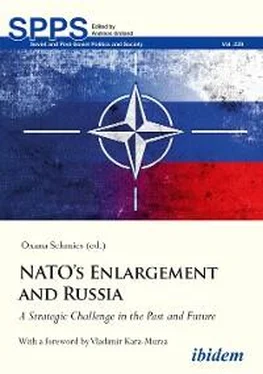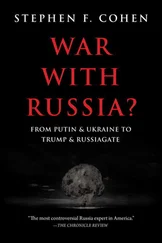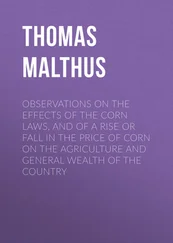Public attention focused mostly on that last, emotional phrase. The remaining, unnoticed part of Putin’s statement, however, seems to have made a fundamental amendment to Russia’s military doctrine: essentially, the declaration of no first use of nuclear weapons. This is something the Soviet Union declared in 1982 (though no one in the world took it seriously then) and that Russia abolished in 1993 (which everyone believed). Of the nine states that currently possess nuclear weapons, the only countries to have undertaken such a commitment are China (though few believe it) and India (though it has provided some reservations).
It is not clear what happened to the provision of Russia’s official military doctrine that claimed the right to the first use of nuclear weapons “in the event of aggression against the Russian Federation with the use of conventional weapons when the very existence of the state is in jeopardy.” Moreover, the described launch-on-warning concept clearly does not apply to the use of tactical nuclear weapons—which Russia probably has more of than all the other countries in the world combined—by ground forces, the navy, air defense, and the air force. 23
Furthermore, although Putin referred to nuclear weapons in general, it is possible that the concept he outlined relates only to the use of strategic nuclear forces, and above all the silo-based strategic rocket forces. Otherwise, it is not clear why large investments have been made for many years in expensive, high-value systems such as ballistic missile submarines and land-based mobile ICBMs, which are primarily designed for the “deep second strike” (that is, a launch when there is no doubt about an attack and its initiator after nuclear weapons have been detonated on Russian territory). In any case, Putin said what he said, and all possible interpretations are the personal opinion of experts, not the official position of the supreme commander, especially since he called on “all of you and those who will later analyze and in one way or another interpret my every word here” to keep this statement in mind.
Besides, Putin implicitly reaffirmed the conviction shared by the Soviet Union and the United States in the 1970s and 1980s that a nuclear war would be a catastrophe for humanity, and therefore it cannot be fought and won. In any case, the historic importance of the above statement depends on whether or not the next edition of the Russian military doctrine is amended accordingly.
In all other respects, compared to the period of former U.S. president Barack Obama’s time in the White House, the views of the two leading powers on the significance of nuclear weapons have become noticeably more symmetrical. In the Obama years, Moscow had not expressed alarm over U.S. nuclear forces, but had consistently shown concern about U.S. non-nuclear missile defense programs and high-precision long-range conventional offensive systems. For its part, Washington had worried about Russian sub-strategic (tactical) nuclear weapons and general-purpose forces.
Now the United States sees Russia’s (as well as China’s) growing strategic nuclear potential over the past decade as a major threat, and intends to respond to this with an extensive program of modernization and expansion. In turn, Russia has clearly shifted emphasis in recent years to its long-range high-precision conventional offensive weapons, which finally aroused U.S. concern in the 2018 Nuclear Posture Review. 24
Historical analysis shows that strategic asymmetries have periodically created considerable difficulties for nuclear arms control negotiations. 25Conversely, nuclear symmetry—which began with the Soviet Union achieving parity with the United States in the 1970s and 1980s—has usually contributed to the progress of negotiations.
However, the current symmetry of strategic capabilities and views on their importance does not guarantee a resumption of dialogue and reduction of the nuclear threat. This apparent paradox is explained by nuclear deterrence’s nature as a special kind of military and political relationship between states.
The Dichotomy of Nuclear Deterrence
The dual nature of nuclear deterrence arises from the blurred distinction between the use of nuclear deterrence as a political tool to prevent war and the practical use of nuclear weapons as a means of warfare. After all, any deterrence is only feasible if it relies on the material basis of nuclear weapons and the willingness to use them in accordance with military doctrine, strategy, and operational plans.
In today’s world, all states openly (or, like Israel, by default) maintain and improve their nuclear weapons for deterrence purposes. At the same time, no weapons system is actually created for deterrence, because it is too general and amorphous a concept for the military planners and arms designers. The development of all nuclear weapons systems integrates the latest technical achievements to perform specific military tasks: the destruction of certain military and civilian targets in the specified conditions of conflict. At the same time, certain technical aspects of weapons and related operational plans may increase the likelihood of a military conflict or its escalation. Today, all of this is happening under the influence of technological and military developments and new strategic concepts among the leading nuclear powers, and is being exacerbated by the growing political tensions between Russia and the United States.
The enormous destructive power and technical complexity of existing nuclear forces have effectively left critical political decisions hostage to strategic concepts and operational plans developed in military offices long before an outbreak of armed conflict. And these plans are dictated by the technical specifications of the weapons and their command-and-control information systems. With regards to the present day, the classical Clausewitz postulate can be reformulated as follows: war (at least global nuclear war) is no longer the continuation of policy by other means. It is the continuation of military doctrine and the technical specifications of weapons systems that determine the plans and methods of their employment.
An illustration of this is the concept of launch-on-warning as outlined by the Russian leadership. It is mainly driven by the vulnerability of strategic forces to a massive nuclear missile strike. However, this only relates to ICBMs in hardened silo launchers, underground command posts, missile submarines in bases, and bombers at airfields. Land-based mobile missiles on deployment routes, submarines at sea, and aircraft in the air are all able to survive nuclear attack and deliver a “deep second strike,” but this potential seems to be considered insufficiently destructive.
The “assigned level of damage” mentioned in the Russian military doctrine therefore probably implies that a launch-on-warning of silo-based missiles must be carried out against the aggressor, in particular, launches of the most powerful heavy-class ICBMs (such as the current SS-18 Satan and its upcoming follow-on Sarmat). 26And this means that the technical specifications of weapons (such as the inability to make mobile heavy-class liquid-fueled ICBMs, the hardness of their silos, as well as the number, yield, and flight time of the attacking warheads) would dictate the decision of the state’s leadership to end the world: to strike back before the arrival of nuclear attack, the consequences of which were so eloquently described in Putin’s speech at Valdai.
Meanwhile, the concept of launch-on-warning carries a fair risk of unintended nuclear war. This comes from the possibility of a technical failure of the missile attack warning system—which is composed of satellites and ground-based radars—or the unauthorized launch of missiles by the opponent, incorrect interpretations of the other side’s actions, or an uncontrolled escalation of a crisis or local armed conflict.
Читать дальше












